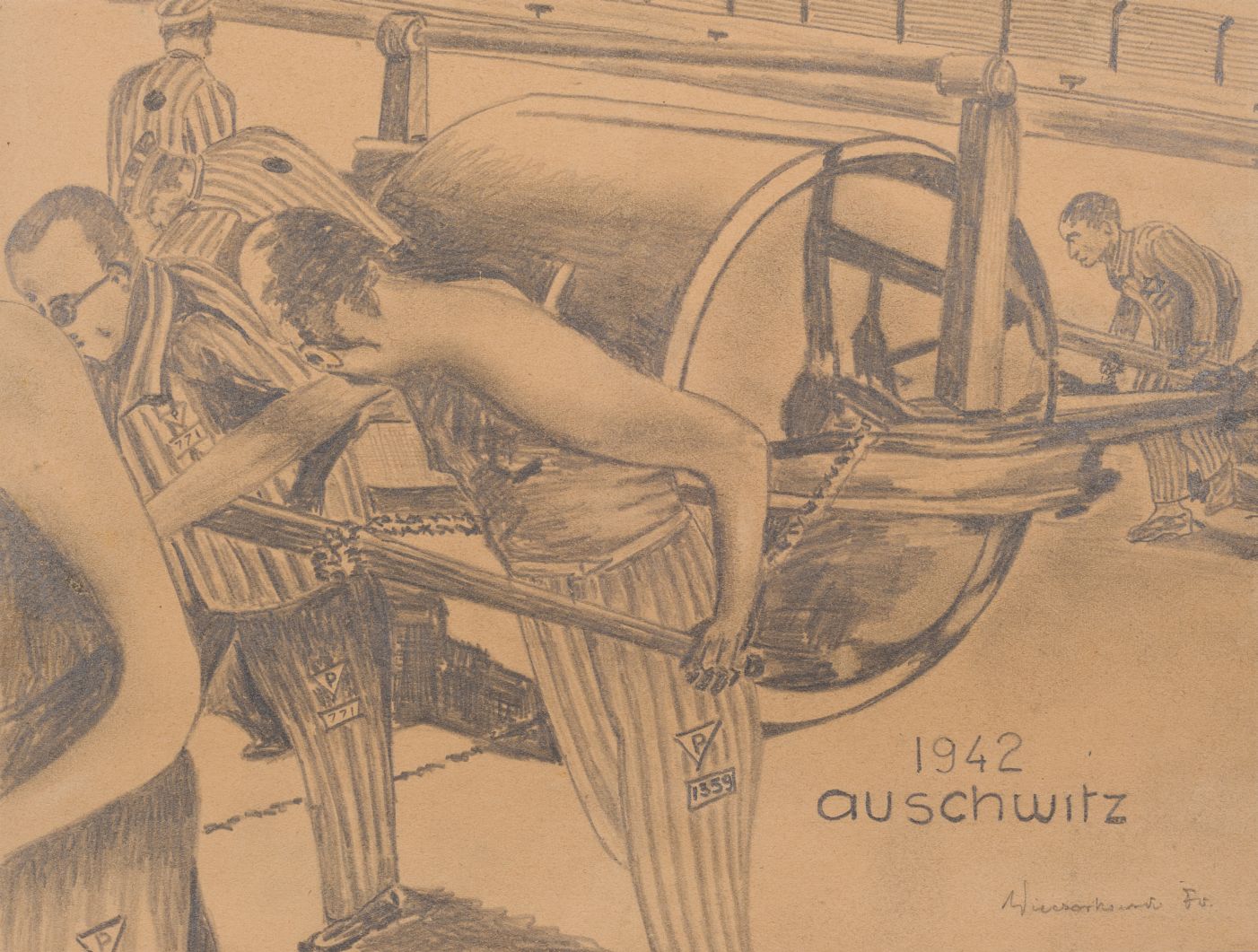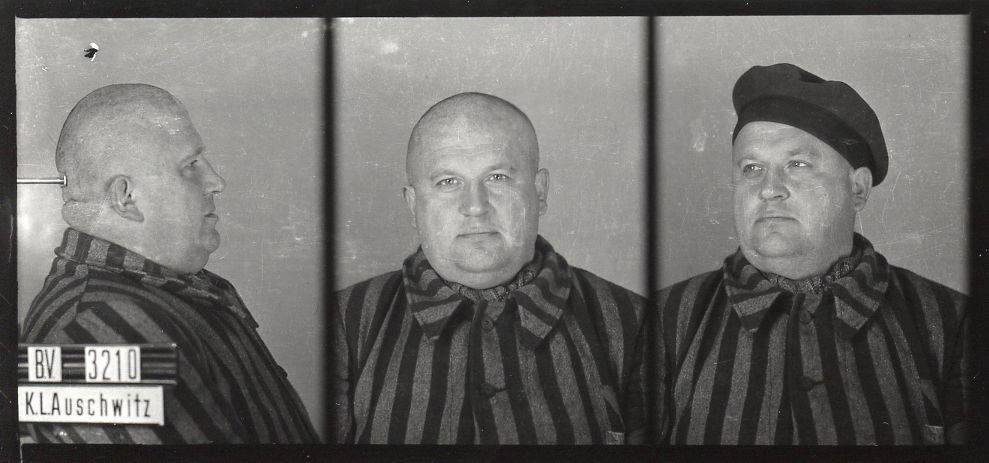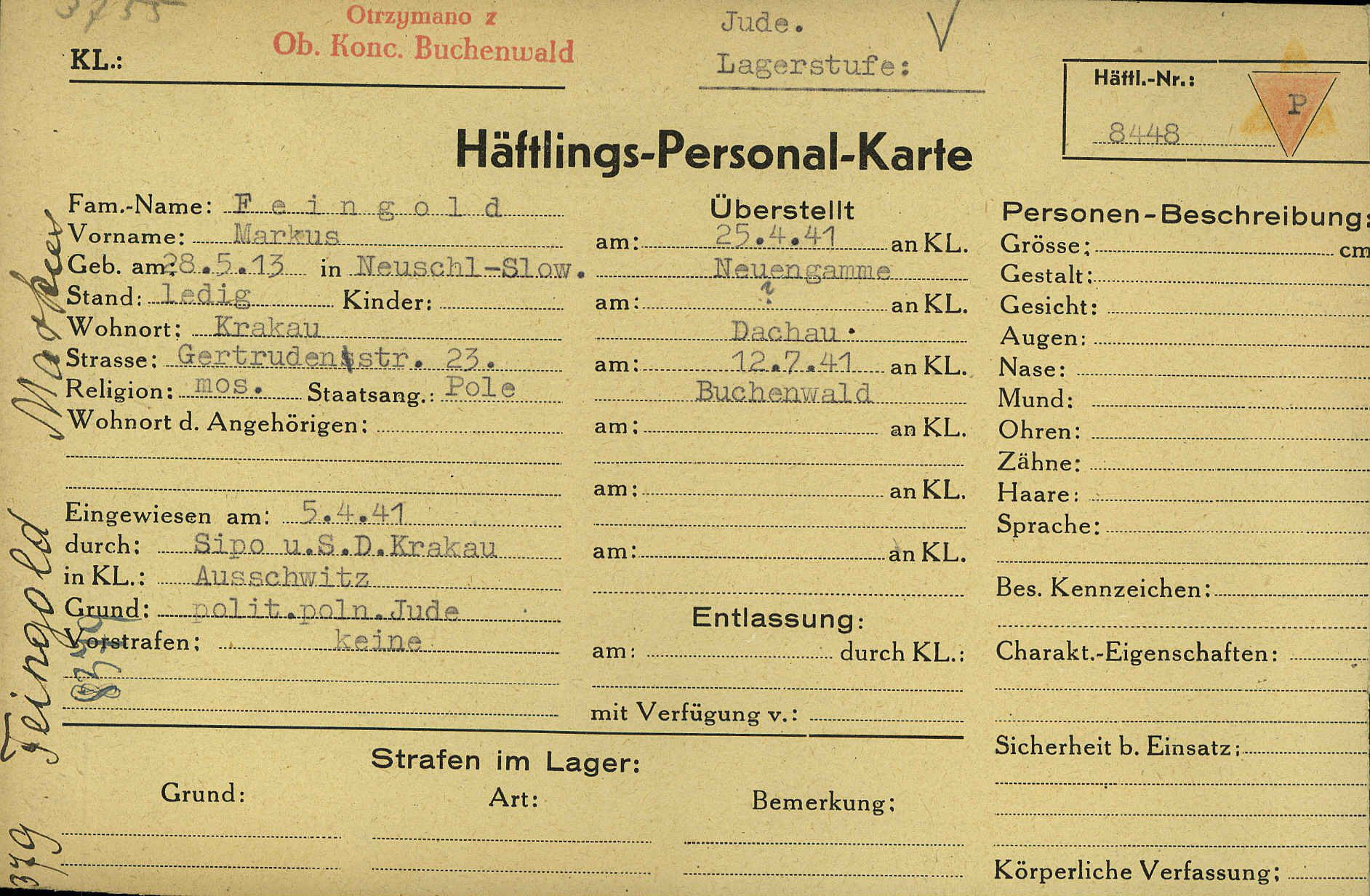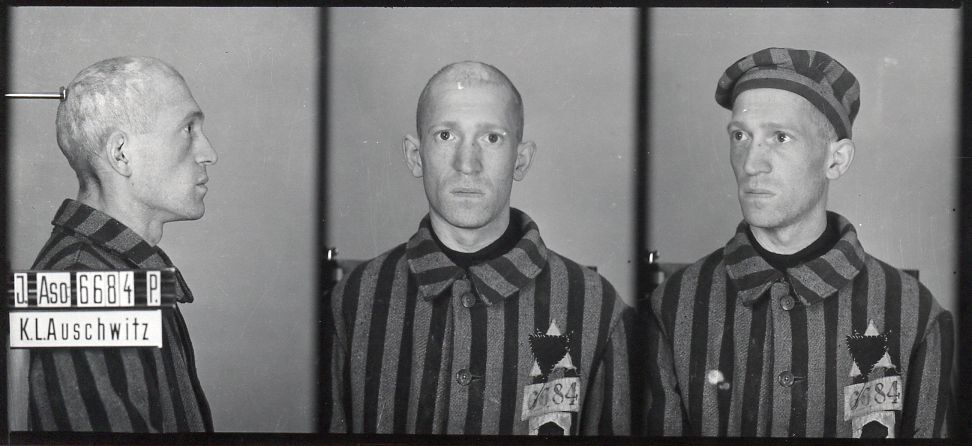In the second month after arrival in the camp, Jews were housed in Block 2, and later—together with the Poles accused of abetting the escape of the first escapee from the camp (Tadeusz Wiejowski)—they were removed to the upper floor of Block No. 3, until in the end they were taken down to the ground floor and partially also to the upper floor of Block No. 11. Together they formed the so-called penal company (Strafkompanie or SK) subjected to stern discipline and selected for the hardest labour. As much as in the case of Poles transfer to the SK was a punishment for alleged offences committed in the camp, Jews were incorporated into the company only due to their origin.
Inmates in the penal company were primarily used for dragging the huge roller that was used to flatten the surface of the camp roads, carrying concrete poles for the fencing, and for digging gravel in the nearby pits (there were at least four such gravel pits). The work within was conducted in downright murderous conditions: continuously beaten with clubs by the Kapos, the inmates had to push the wheelbarrows with the products at a tempo defined as Laufschritt (at a run), and if they stumbled or dropped in exhaustion, if they did not immediately stand up they were beaten until unconscious or killed,. The documents that have been preserved prove that practically all the Jews brought to the camp from 1940 to early Autumn 1941 were sent to the penal company in Block No. 11 immediately on arrival, and they probably all died there.




